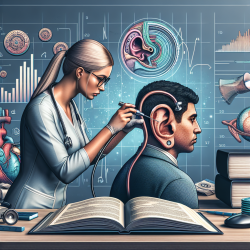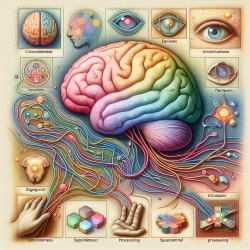As professionals in the field of audiology, staying abreast of the latest research, methodologies, and practices is crucial for delivering the highest standard of care to our clients. The "Handbook of Clinical Audiology," now in its second edition, stands as a beacon of knowledge for audiologists seeking to enhance their clinical practices and understanding of auditory disorders. This comprehensive text, reviewed alongside other notable works in the field, offers a deep dive into the nuances of diagnosing and managing hearing impairments, providing a valuable resource for both seasoned practitioners and students.
The handbook covers a vast array of topics, from basic evaluation techniques to advanced diagnostic and management strategies for auditory dysfunctions. One of the book's strengths lies in its collaborative approach, incorporating contributions from over forty-three experts across forty-nine chapters. This diversity in input ensures a well-rounded perspective on the state of clinical audiology, offering readers insights into both established practices and emerging trends in the field.
Despite its breadth, the handbook does not shy away from delving into specific disorders, such as Meniere's disease, providing detailed discussions on their etiology, pathology, and management. Furthermore, it addresses the technological advancements in audiological diagnostics, albeit with a noted lack of emphasis on newer clinical techniques like brainstem audiometry, highlighting an area for future editions to expand upon.
One of the handbook's most lauded features is its comprehensive approach to diagnostic evaluation. Over three-quarters of the content is dedicated to this area, underscoring the importance of accurate assessment in effective treatment planning. The inclusion of sections on hearing aid technology, evaluation of children and the elderly, and conservation of hearing in various settings further exemplifies the handbook's commitment to covering the gamut of audiological care.
However, the handbook is not without its critiques. Some reviewers have pointed out the need for a stronger integration of scientific research, particularly in areas like psycho-acoustics and auditory physiology, to bolster the profession's scientific foundation. Additionally, minor errors and omissions in psychoacoustic terminology have been noted, suggesting areas for refinement in future editions.
Despite these criticisms, the "Handbook of Clinical Audiology" remains an invaluable resource for audiologists. Its exhaustive subject index and consistent use of terminology make it an accessible reference for professionals seeking to deepen their knowledge or navigate the complexities of auditory disorders. The book's emphasis on diagnostic evaluation, coupled with its practical insights into audiological management, positions it as a cornerstone text for those in the field.
For audiologists committed to professional development and excellence in client care, the "Handbook of Clinical Audiology" is a must-read. It not only serves as a comprehensive guide through the myriad aspects of audiological practice but also challenges practitioners to consider the evolving landscape of hearing healthcare. By engaging with the insights and research presented, audiologists can refine their approaches, adopt new technologies and methodologies, and ultimately, enhance the quality of life for those with hearing impairments.
In pursuit of expanding one's professional knowledge and improving clinical skills, further exploration of the "Handbook of Clinical Audiology" is highly recommended. Handbook of Clinical Audiology.










